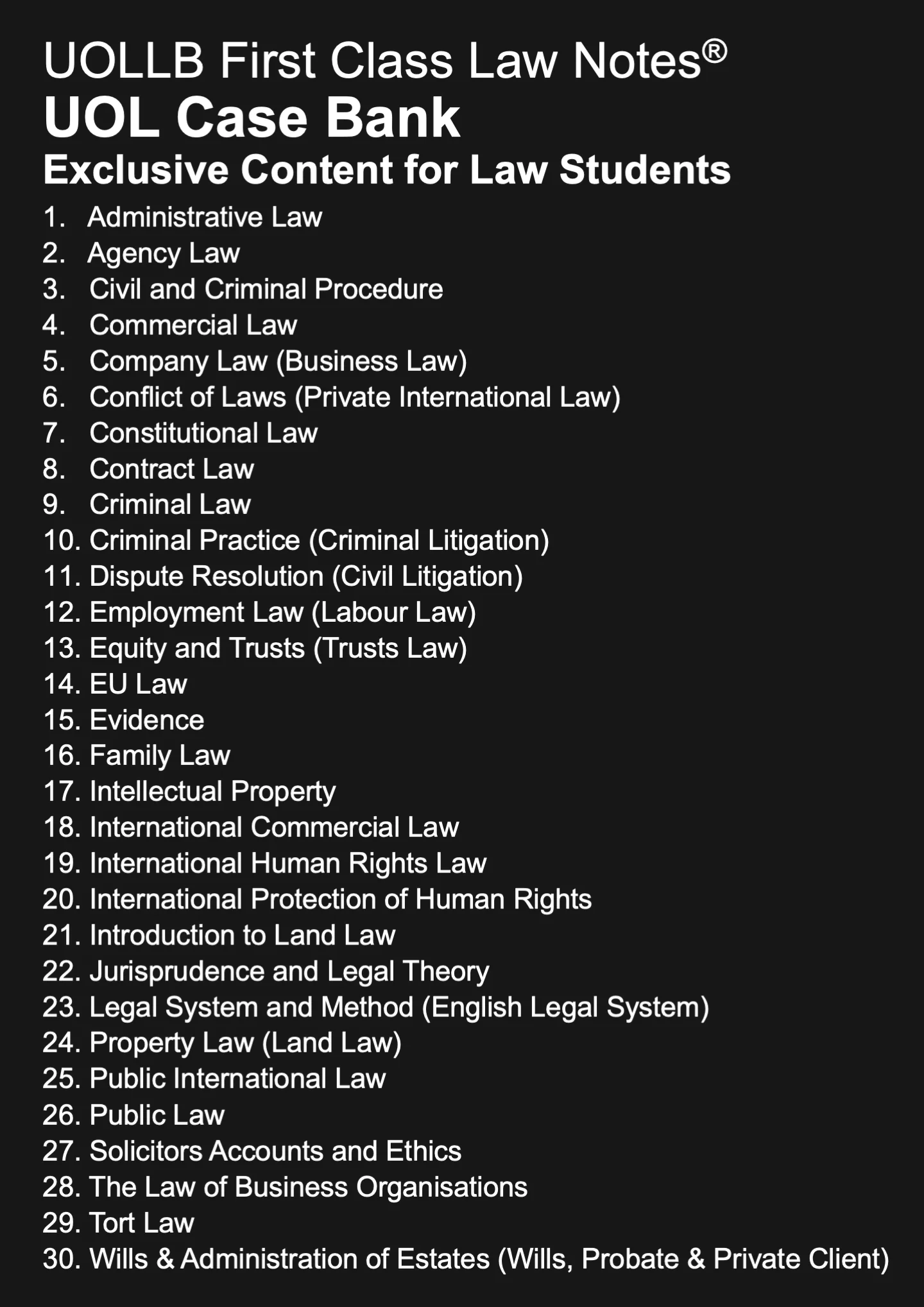Categorisation of Quistclose Trust
Share
A Quistclose trust is a legal concept arising from the case of Barclays Bank Ltd v Quistclose Investments Ltd [1970], providing a method for a creditor to secure a financial interest in loans. The trust is established by inserting a clause into a contract that limits the purposes for which the borrower can use the money. If the borrower deviates from the specified purpose, the money is held on trust for the benefit of the creditor, allowing the creditor to trace and reclaim inappropriately spent funds.
A Quistclose trust enables a creditor to hold a security interest in loans by imposing restrictions on the use of borrowed funds. As funds are intended for a specific purpose, deviation from this purpose triggers the creation of a trust for the benefit of the creditor. The Quistclose trust facilitates the tracing of funds, allowing the creditor to recover inappropriately spent money.
The categorisation of Quistclose trusts within existing trust types has been a subject of academic debate. Scholars have explored whether they fit into resulting trusts, express trusts, constructive trusts, or are, as suggested by Lord Millett, illusory trusts.
Resulting trust: Some interpretations suggest that a Quistclose trust is a resulting trust. Lord Wilberforce proposed a two-stage trust structure, involving the transfer of the interest to the borrower (primary trust) and then reversing it (secondary trust) when the purpose fails. However, critics argue that the resulting trust may come too late for an effective remedy.
Express trust: Quistclose trusts could be construed as express trusts if the contract explicitly specifies the purposes for which the money is to be used. The borrower would act as a trustee, and any deviation would violate the trustee's duties.
Constructive trust: Another theory posits that Quistclose trusts are constructive trusts. This would involve the borrower being deemed "unconscionable" for using the money in a manner inconsistent with the agreed-upon purpose.
The primary challenge lies in the classification within existing trust types, with Quistclose trusts having characteristics of resulting, express, or constructive trusts. Doubts have been raised about the applicability of the resulting trust concept, particularly concerning the timing of its creation and the effectiveness of remedies. The explicit terms required for an express trust have not been consistently upheld by English courts, and the constructive trust theory may face challenges in its timing of creation.
Lord Millett introduced the concept of an illusory trust, suggesting that the beneficiary (e.g. the moneylender) takes no active role, and the trust is revocable at any time. However, this view has been criticized for not aligning with the facts of Quistclose and neglecting the mutual intention of the parties.
In summary, the categorisation of Quistclose trusts remains a complex and debated issue in trusts law, with scholars and jurists exploring different perspectives on their nature and characteristics.
A Quistclose trust enables a creditor to hold a security interest in loans by imposing restrictions on the use of borrowed funds. As funds are intended for a specific purpose, deviation from this purpose triggers the creation of a trust for the benefit of the creditor. The Quistclose trust facilitates the tracing of funds, allowing the creditor to recover inappropriately spent money.
The categorisation of Quistclose trusts within existing trust types has been a subject of academic debate. Scholars have explored whether they fit into resulting trusts, express trusts, constructive trusts, or are, as suggested by Lord Millett, illusory trusts.
Resulting trust: Some interpretations suggest that a Quistclose trust is a resulting trust. Lord Wilberforce proposed a two-stage trust structure, involving the transfer of the interest to the borrower (primary trust) and then reversing it (secondary trust) when the purpose fails. However, critics argue that the resulting trust may come too late for an effective remedy.
Express trust: Quistclose trusts could be construed as express trusts if the contract explicitly specifies the purposes for which the money is to be used. The borrower would act as a trustee, and any deviation would violate the trustee's duties.
Constructive trust: Another theory posits that Quistclose trusts are constructive trusts. This would involve the borrower being deemed "unconscionable" for using the money in a manner inconsistent with the agreed-upon purpose.
The primary challenge lies in the classification within existing trust types, with Quistclose trusts having characteristics of resulting, express, or constructive trusts. Doubts have been raised about the applicability of the resulting trust concept, particularly concerning the timing of its creation and the effectiveness of remedies. The explicit terms required for an express trust have not been consistently upheld by English courts, and the constructive trust theory may face challenges in its timing of creation.
Lord Millett introduced the concept of an illusory trust, suggesting that the beneficiary (e.g. the moneylender) takes no active role, and the trust is revocable at any time. However, this view has been criticized for not aligning with the facts of Quistclose and neglecting the mutual intention of the parties.
In summary, the categorisation of Quistclose trusts remains a complex and debated issue in trusts law, with scholars and jurists exploring different perspectives on their nature and characteristics.























































